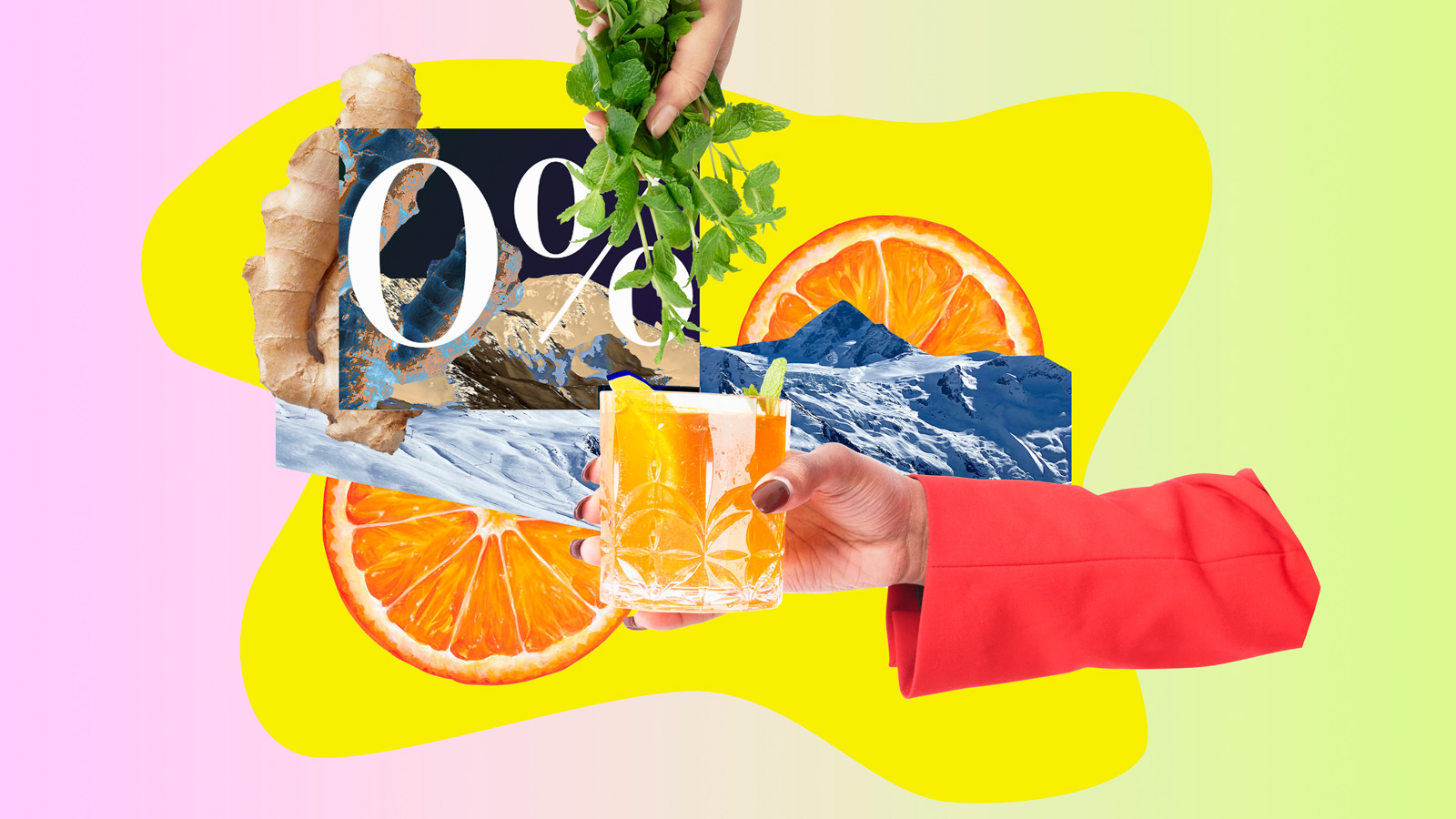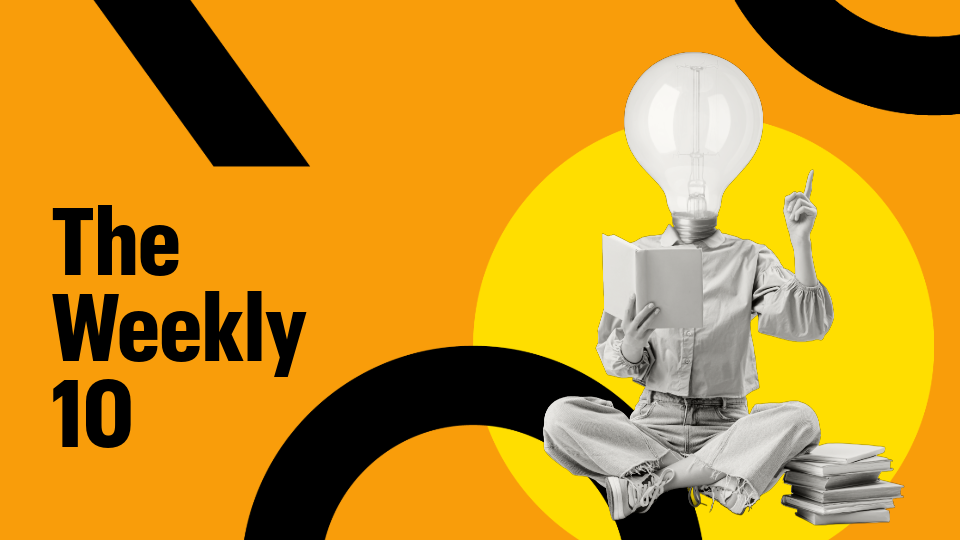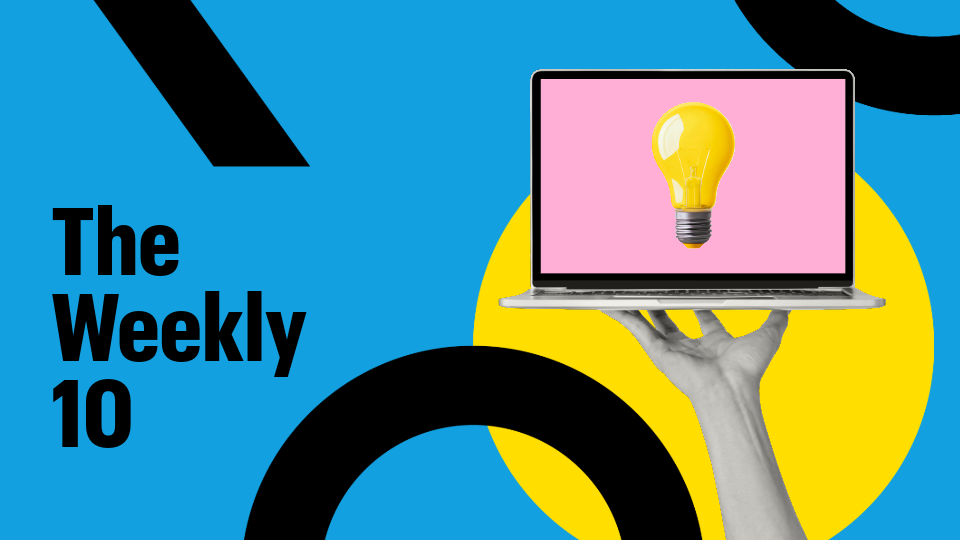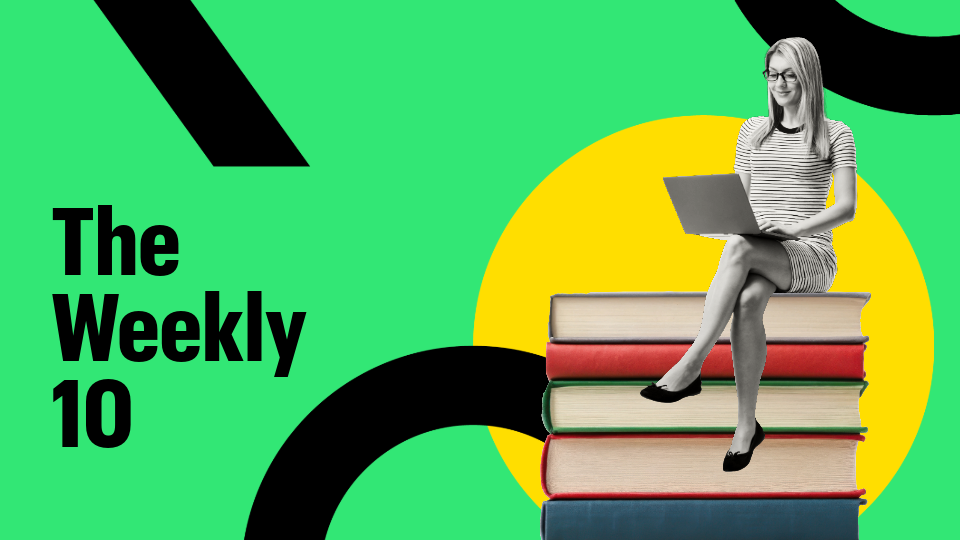It’s just before dinnertime in the Finger Lakes region of New York. A couple enjoying a town festival head into a bar for a quick refreshment and decide to order non-alcoholic beer.
“Sure thing,” the bartender says confidently. Too confidently, it turns out. In the next minute, she’s kneeling on the floor in front of a fully stocked beer refrigerator, struggling to see beyond the bottles and cans of Coors and Bud Light and other brands. Finally, she sees the prize: a lone bottle of O’Doul’s.
It’s a true story from a few years back that’s less and less likely to happen these days. Global demand for non-alcoholic (NA) adult beverages has surged in the past half-decade, opening a significant new market for brands and their restaurant/bar partners.
Fueled by recent studies linking alcohol to various health problems, a growing interest in wellness and advances in the science of beverage-making, the emerging NA trend presents an exciting challenge for marketers. How do you maintain the long-standing cultural association between social outings and alcohol when the beverage of choice doesn’t create the same buzz?
The answer: with data-informed marketing that helps convince sober-curious consumers — even some who may still drink alcohol — to try something new and keep them coming back for more.
Surging interest in NA beverages allows marketers to use innovative consumer-first design, content, packaging and media planning to help brands respond to changing cultural norms and demographics.
Non-alcoholic market expands to meet growing demand
The next time the thirsty couple in the Finger Lakes seeks non-alcoholic beverages, they’re likely to find a broader set of choices, according to sales data and consumer market research.
Consumers purchased an estimated $11 billion of low alcohol/non-alcoholic beverages in the United States and 10 other industrialized nations (including Brazil, France, Germany and Japan) in 2022, up from $8 billion in 2018, according to the beverage industry research firm IWSR. Those sales include no- and low-alcohol beer, cider, wine, spirits and ready-to-drink NA cocktails.
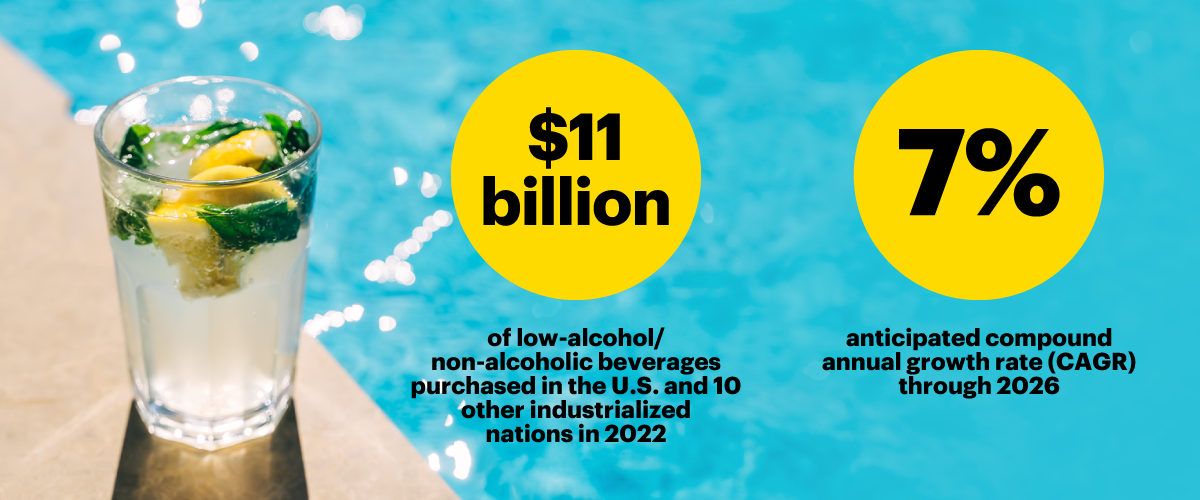
Source: 2023 IWSR drinks market analysis.
In its year-end 2022 study, IWSR projected an increasing affinity for NA and low-alcohol beverages, anticipating sales of those items to grow at a compound annual growth rate (CAGR) of 7% through 2026. That’s up from 5% in the prior reporting period of 2018-2022.
One significant factor in the projected increase: generational preferences. Roughly one in four members of Generation Z (23%) and Millennials (24%) said they drink non-alcoholic beverages often, according to a 2023 Prodege Decipher survey of 1,001 U.S. consumers.
The same survey detected several motivations for trying NA beverages: About half wanted to see if they liked the taste, while about a third said they were either seeking a healthier lifestyle (31%) or couldn’t drink alcohol for a specific other reason (35%).
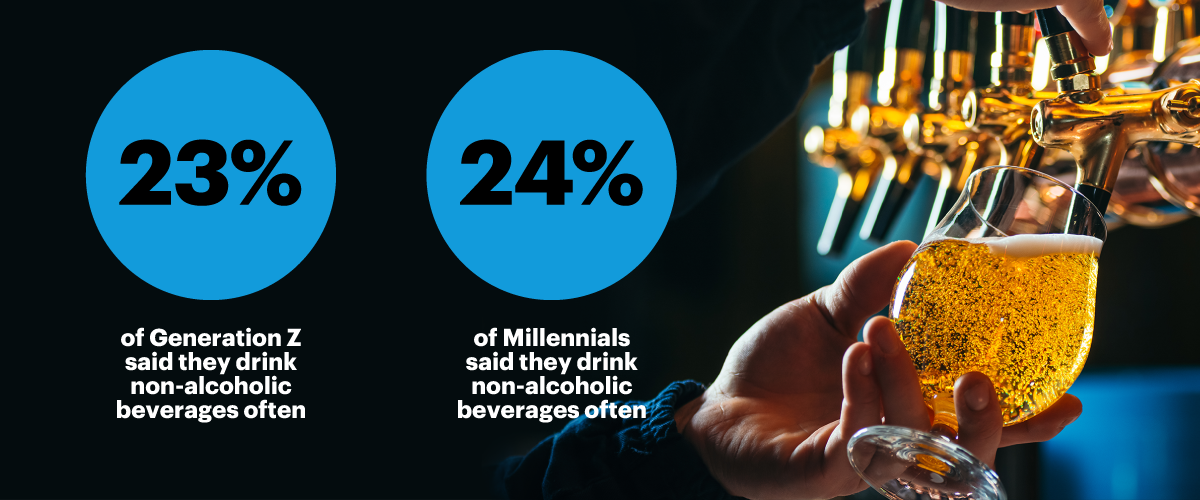
Source: 2023 Prodege Decipher survey of 1,001 U.S. consumers.
For marketers, the growth of the NA market isn’t necessarily a zero-sum game. More than three-fourths (78%) of consumers in the IWSR survey also drink alcohol on occasion. The share of drinkers who abstain from alcohol altogether is small but growing at 18%.
“The dynamic no/low-alcohol category presents opportunities for incremental sales growth as consumers are recruited from drinks categories such as soft drinks and water. Brand owners have an opportunity to recruit non-drinkers of alcohol,” Susie Goldspink, Head of No- and Low-Alcohol, IWSR Drinks Market Analysis, said in a statement.
“As more people opt to avoid alcohol on certain occasions — or abstain from it altogether — no-alcohol is steadily increasing its share of the no/low category.”
Blazing a new trail in non-alcoholic marketing
The unique and almost paradoxical nature of the NA consumer presents challenges for brands as they seek a piece of this fast-growing market. Quad has had the opportunity to shape the answer to those challenges through relationships with regional brewing companies — most recently, Summit Brewing Co. of St. Paul, Minnesota.
Summit worked with Periscope, a Quad company to develop packaging design solutions for its Nialas non-alcoholic IPA and Irish-Style Dark beer, launched in September 2022, said Nicole Meyer, Creative Director at Periscope.
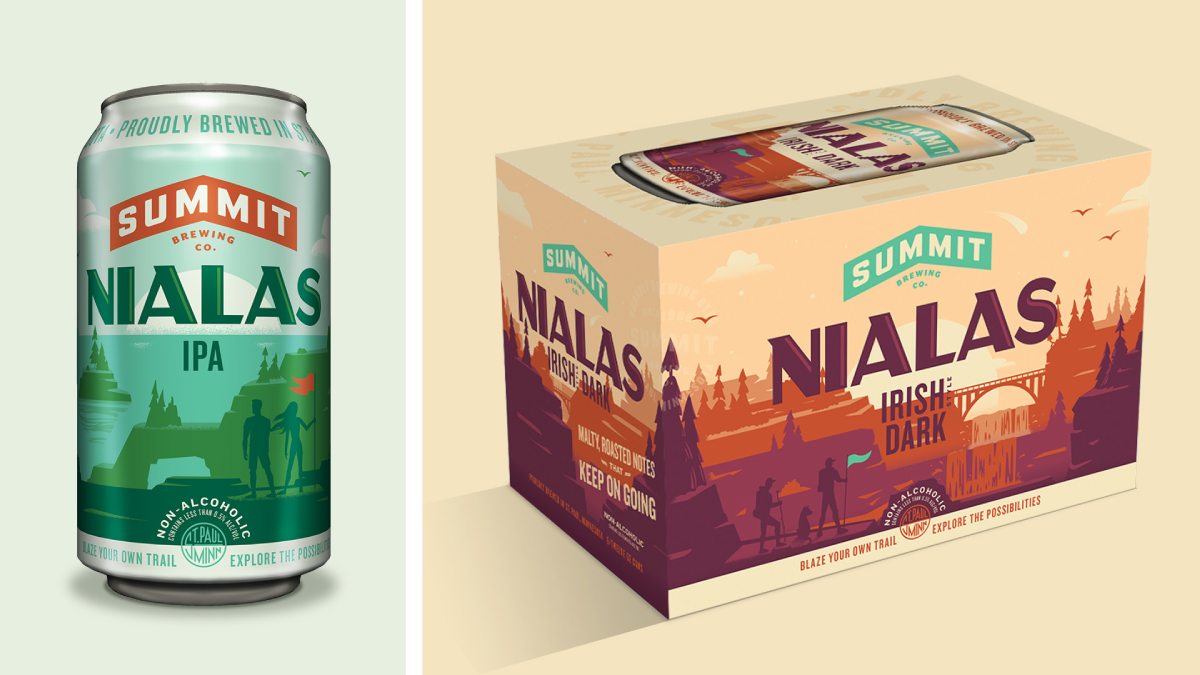
Summit had two main requirements for the project. Like many brands entering the emerging NA market, Summit wanted the design to fit within the larger family of Summit beer, while also standing out on the shelf as something new and different, Meyer says. Founded in 1986, Summit has an existing popular line of traditional alcoholic beer.
“We focused in creating something that you’re excited to bring to a party,” Meyer says, “so you don’t feel left out.”
To that end, the Periscope team looked to build the design around a customer story. They and Summit settled on one that perfectly encapsulates the non-alcoholic beer trend: the trailblazer. The idea was to “position this as a whole new world of beer drinking. Even if you’re already a beer drinker, we wanted to communicate this notion of discovery,” Meyer says.
Periscope continues to work with Summit on a variety of projects across its product line.
Bold choices in NA packaging, color
Prior to its work with Summit, Periscope served as the agency of record (AOR) for Hairless Dog Brewing Company, also of Minneapolis, which produces what it says is the first truly alcohol-free craft beer in the United States. In that role, the team supported the nascent company with brand strategy, brand creative, packaging design, social media strategy and execution, website development and public relations.
The work, which also involved Favorite Child, Periscope’s brand design practice, also involved developing and launching a new logo and new packaging as the company began offering beer in cans. Periscope designed a logo featuring a silhouetted white version of a hairless dog, and added a “north star” to pay homage to the company’s Minnesota roots. “We wanted to take their brand to a bolder, more modern place,” Meyer says.
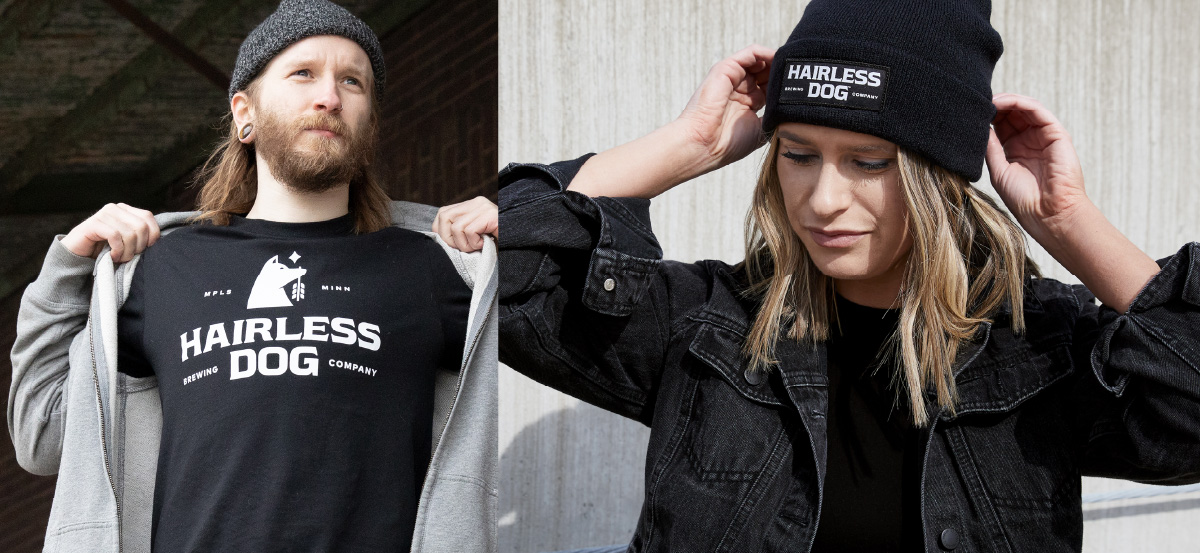
One challenge for Summit and other marketers is recognizing that many NA beverage fans see themselves as part of an emerging community dedicated to changing what they see as an excessively boozy culture, where events revolve around alcohol.
NA drinkers no longer want to be stigmatized as “uncool” for opting to prioritize something other than alcohol-by-volume data. They want beverage makers, bars, restaurants and others to show they understand the NA lifestyle and take it seriously as a distinct market.
Diverse types of alcohol-free consumers
That means acknowledging the diversity of the customer base: Some want 0% alcohol; others are open to low-alcohol offerings. Some will always choose NA; others will also occasionally drink alcoholic beverages.
In fact, data show that a large part of the market’s growth is from people who drink both alcoholic and non-alcoholic beverages. Leveraging the right go-to-market messaging calls for a sophisticated approach to address the full opportunity.
In that sense, the NA category represents a complement and not a threat to adult beverages, as shoppers pick up both kinds of beverages, says Andrew Katz, Chief Marketing Officer for Athletic Brewing Co., a line of low-alcohol beer now widely found in supermarkets as well as bars and restaurants. “We know from basket-level data that our shoppers are higher-value shoppers, and it is an incremental purchase as opposed to a substitute,” Katz said on Adweek’s “Brave Commerce” podcast.
Accordingly, the company’s messages urge customers to “give dry a try.” Athletic’s beers emphasize activity (such as Free Wave IPA and Fireside Brew Lodge Life) and unique flavors (Blueberry Mosaic, Light Copper and Dark Cinnamon Crumble with Lactose).
The opportunity in NA has drawn the attention of big brands including Heineken, which in turn is helping redefine the scope of choices for media channels and digital strategy. For instance, the Dutch brewer purchased a spot during the broadcast of the 2023 Super Bowl in support of its Heineken 0.0 beer.
The ad starred actor Paul Rudd and reflected a collaborative effort with Marvel Studios to promote the movie “Ant-Man and The Wasp: Quantumania.” Heineken has been steadily increasing the proportion of development budgets devoted to the NA category and anticipates NA to make up 5% to 10% of its sales in the near future, the Financial Times reports.
What is Dry January?
The growing social movement and success stories around NA offerings suggest this new category is here to stay as perceptions, priorities and tastes evolve. Nationwide, alcohol-free bars have been opening in New York, Minneapolis, Chicago, Austin and many other cities, and they are often built around offering unique social experiences to support the sober-curious. Events such as Dry January have also grown in popularity.
The 2018 book, “Sober Curious: The Blissful Sleep, Greater Focus, Deep Connection, and Limitless Presence Awaiting Us All on the Other Side of Alcohol,” by journalist Ruby Warrington, is often credited with triggering a social movement around abstinence from alcohol.
Since publishing the book, Warrington has built an identity around the Sober Curious brand, hosting lectures and retreats (including one this month timed to the growing Dry January trend) and starting a popular podcast.
“I have seen people who never liked to drink, who never wanted to drink in the first place, but felt a lot of social pressure to drink,” Warrington said in an interview with Willamette Week. “I’ve seen them find new language and new ways to talk about the fact they don’t want to engage in drinking culture, and that’s been nice to see.”
What can brands do?
Bringing quality to the no/low-alcohol category starts with creating tasty beverages. But success goes well beyond to include unique creative approaches to:
